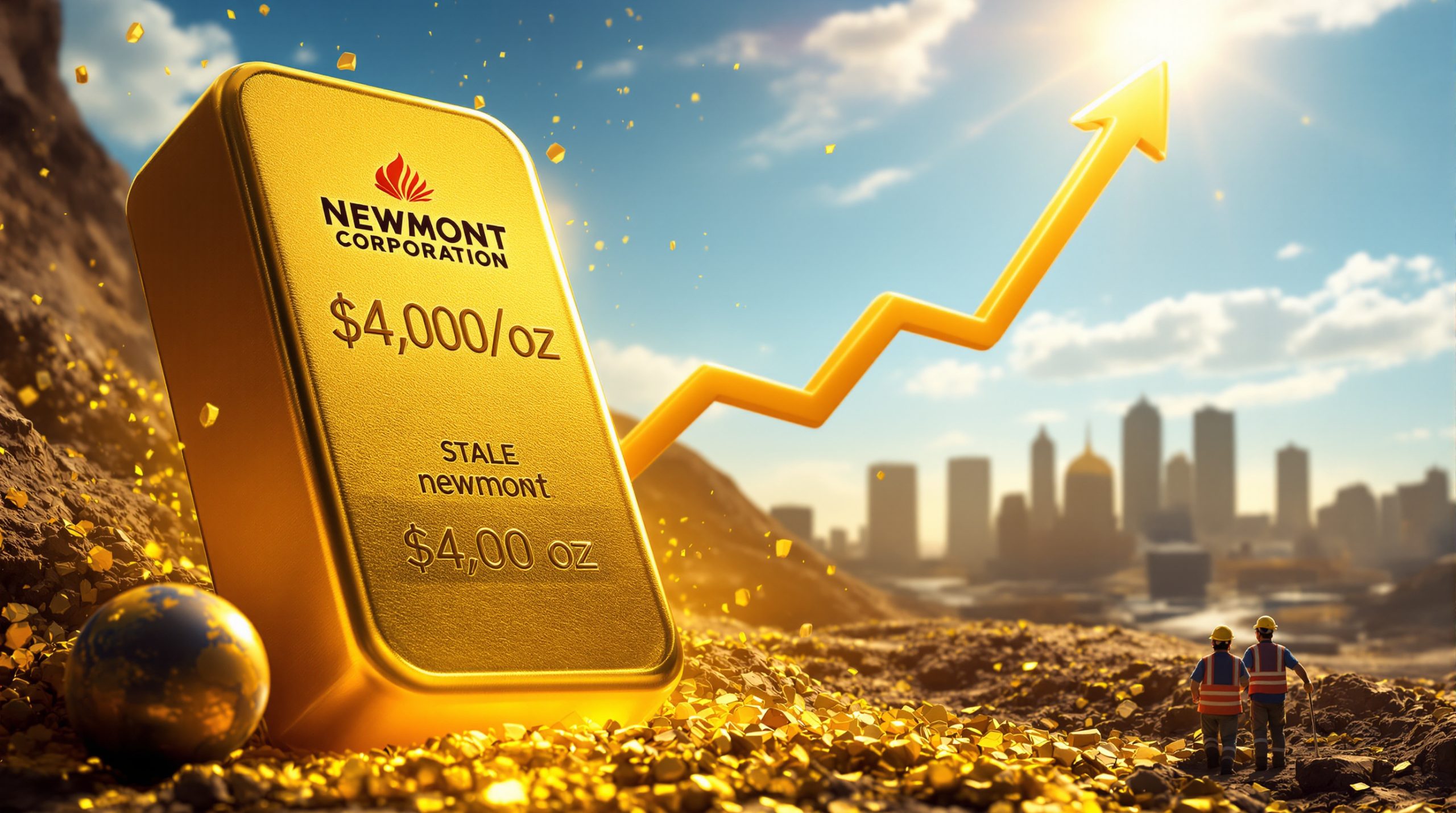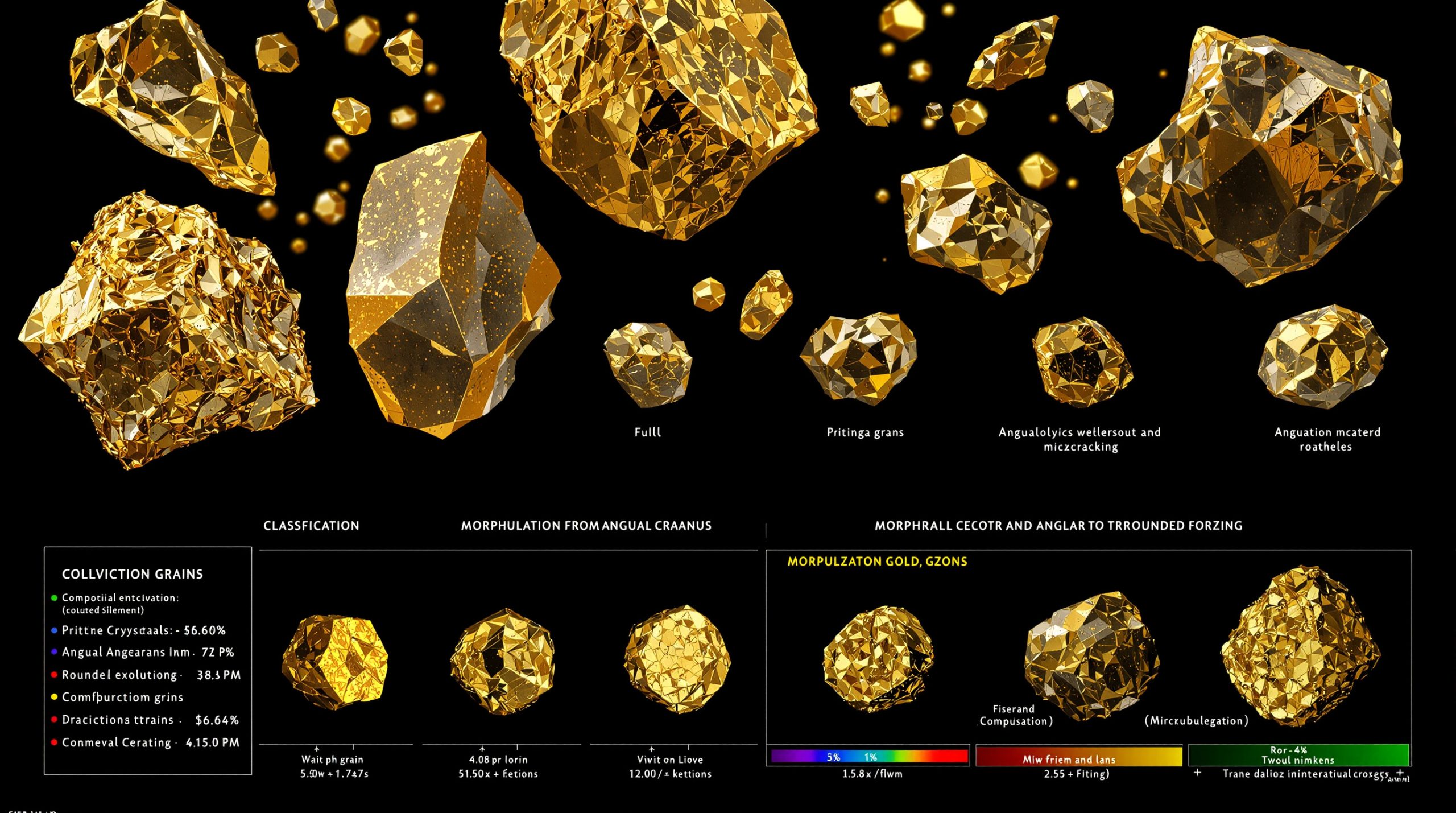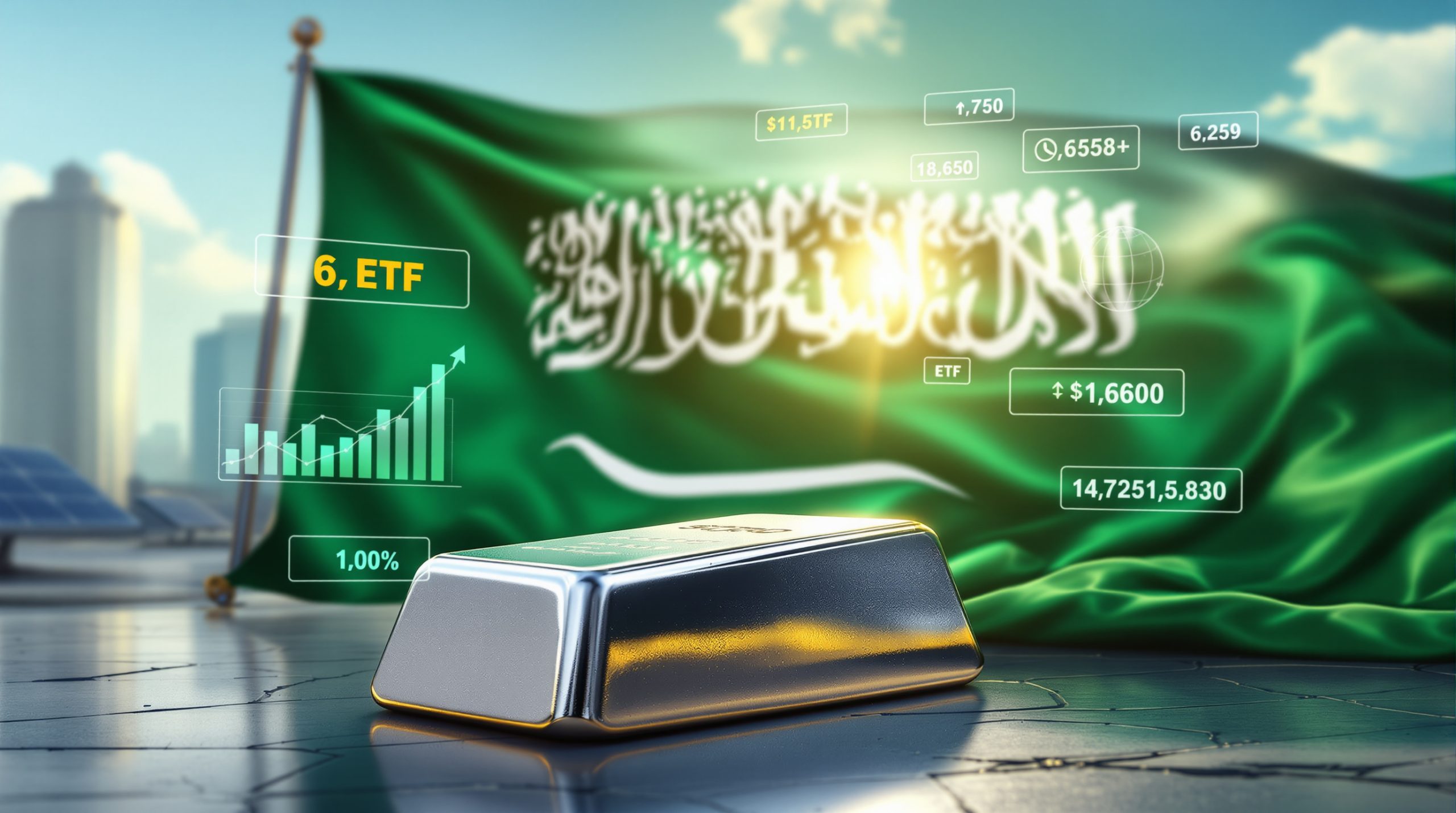How Is China Reshaping Global Metals Market Control?
The global precious metals market is experiencing a seismic shift as China positions the Shanghai metals market as a formidable alternative to traditional Western exchanges. This strategic realignment represents more than just a new trading venue—it signals a fundamental power redistribution in how precious metals are priced, traded, and delivered worldwide.
The Shifting Balance of Power in Metals Markets
Traditional Western pricing dominance is facing unprecedented challenges as the Shanghai Gold Exchange (SGE) has emerged as the world's largest physical gold exchange by trading volume. In 2023, the SGE traded a staggering 24,767 tonnes of gold—representing approximately 70% of global gold mine production that year according to the World Gold Council.
The evidence of this power shift appears in persistent price divergences between Shanghai and Western markets. The "Shanghai premium" has reached as high as $40-50 per ounce during certain periods in 2023-2024, indicating stronger physical demand in Asian markets compared to paper-dominated Western exchanges.
Major nations including the US, UK, France, Germany, and China are now engaged in strategic competition for control of metals price discovery mechanisms, with the US-China trade war impact increasingly stressing Western exchange systems.
Key Market Dynamics Driving the Power Shift
Physical metal shortages represent a primary driver behind this transformation. Market analysts have noted significantly increased physical delivery demands on COMEX, with substantial tonnage being withdrawn from exchange vaults. These delivery demands are testing the operational capacity of Western exchanges accustomed to primarily paper trading.
Paper-to-physical conversion is accelerating globally as the Bank for International Settlements noted in their 2023 annual report that "demand for physical precious metals has increased notably in recent years, particularly from central banks and Asian markets."
China's gold reserves have increased substantially, with the People's Bank of China officially reporting an increase from 1,948 tonnes in 2019 to 2,264 tonnes by the end of 2024—representing an addition of 316 tonnes over this period.
The fundamental supply-demand imbalance is further amplifying price pressures. The Silver Institute's "World Silver Survey 2024" reported that the global silver market faced a supply deficit of 142.1 million ounces in 2023, marking the fourth consecutive year of deficit conditions.
Why Are Western Metals Exchanges Under Pressure?
Western metals exchanges, particularly COMEX, are experiencing unprecedented stress as physical delivery demands accelerate. This situation represents a potential turning point in how precious metals markets function and where price discovery occurs.
The COMEX Delivery Crisis
Physical delivery demands have reached extraordinary levels on COMEX. According to CME Group data, COMEX registered gold inventory (available for delivery) has fluctuated dramatically throughout 2024, reflecting the increasing pressure from contract holders converting paper claims to physical metal.
The situation isn't limited to gold. The silver market squeeze has documented persistent supply deficits, creating additional pressure on exchange inventories. The physical delivery process involves the transfer of warehouse receipts for metal stored in approved depositories, and these inventories are being drawn down at accelerating rates.
COMEX gold futures contracts (GC) represent 100 troy ounces of gold and can be settled through physical delivery during designated months. As more contract holders stand for delivery rather than rolling or cash settling positions, the exchange faces growing operational challenges.
The Fractional Reserve Metals System
The current metals market structure has long operated on what some analysts describe as a fractional reserve basis, where paper claims on metal significantly exceed physical inventories available for immediate delivery. This model has functioned effectively during periods of low physical demand, but faces challenges when conversion rates increase.
The Bank for International Settlements has acknowledged changing market dynamics, noting increased physical precious metals demand particularly from central banks and Asian markets. This shift threatens the established order where Western exchanges have dominated price discovery.
Historical price formation mechanisms have had significant impacts on mining industry economics. When metals prices remain suppressed for extended periods, mining investment declines, creating the conditions for future supply shortfalls. The current price increases may partially reflect this long-term underinvestment meeting increasing physical demand.
Growing distrust in paper metal instruments has emerged worldwide, with investors increasingly preferring allocated physical holdings over unallocated accounts or futures-based exposure. This preference for physical ownership represents a fundamental shift in market psychology.
What Are the Current Precious Metals Price Projections?
The precious metals market is experiencing a significant bullish phase, with both gold and silver reaching multi-year or all-time high gold prices. Understanding the potential price trajectories requires examining both near-term catalysts and longer-term structural factors.
Near-Term Price Targets (Through January 2026)
Current price levels for gold have reached the $2,700-2,800 per ounce range as of October 2024, according to London Bullion Market Association data. For silver, prices have moved into the $32-34 range during the same period.
Looking ahead to January 2026, price projections suggest potential continuation of the uptrend:
| Metal | Current Price Range | Projected Price (Jan 2026) | Percentage Increase |
|---|---|---|---|
| Gold | ~$2,700-2,800 | $5,000 | ~80% |
| Silver | ~$32-34 | $75 | ~125% |
These projections represent market opinions rather than guaranteed outcomes. Goldman Sachs commodity analysts have projected gold could reach $2,900 per ounce by end of 2025, while Bank of America research has suggested gold could reach $3,000 per ounce in 2025 under scenarios of continued geopolitical tension and monetary policy easing.
Long-Term Price Projections (2026-2028)
The longer-term outlook suggests potentially even stronger price performance:
| Metal | Jan 2027 Projection | Jan 2028 Projection | Percentage Increase from Current |
|---|---|---|---|
| Gold | $7,500 | $10,000 | ~260-270% |
| Silver | $125 | $250 | ~640-650% |
Factors Supporting Higher Price Projections
Federal Reserve interest rate policy will play a crucial role in precious metals performance. According to Federal Reserve economic research, historically there has been an inverse relationship between real interest rates and gold prices. When real rates decline, gold typically becomes more attractive as its opportunity cost decreases.
Physical delivery demands continue growing across global exchanges, indicating strong underlying demand for tangible assets rather than paper claims. This demand supports the thesis that metals prices must rise sufficiently to incentivize new production.
Geopolitical tensions have historically supported precious metals as safe-haven assets. The gold price forecast suggests that ongoing conflicts in Ukraine and the Middle East, combined with growing economic nationalism, provide a supportive backdrop for metals prices.
Structural supply deficits, particularly in silver, remain a key price driver. The Silver Institute has documented four consecutive years of global silver supply deficits, creating fundamental support for higher prices.
How Are Global Financial Vulnerabilities Affecting Metals Markets?
The broader financial landscape plays a crucial role in precious metals pricing and demand. Current vulnerabilities in the global financial system are creating additional support for tangible assets like gold and silver.
Banking System Pressures
Global debt has reached extraordinary levels, with the Institute of International Finance reporting that global debt reached $315 trillion in Q2 2024, representing approximately 330% of global GDP. This debt burden creates systemic vulnerabilities that increase the appeal of precious metals as portfolio insurance.
US banks face significant challenges from unrealized losses. According to FDIC data, unrealized losses on securities held by U.S. commercial banks totaled approximately $515 billion as of Q2 2024. These losses occur when interest rates rise, causing the market value of existing fixed-income securities to fall.
The Federal Reserve's reverse repo facility balance has declined dramatically, from approximately $2.5 trillion in mid-2023 to approximately $300 billion by October 2024. This decline represents a significant reduction in available liquidity that had previously supported the financial system.
Interest Rate Dynamics
The 10-year U.S. Treasury yield has stabilized around 4.00-4.20% in October 2024. This rate environment has significant implications for precious metals, which have historically performed well when real rates (nominal rates minus inflation) are low or negative.
Market expectations are growing for rates to decline to approximately 3.5% in coming months. Such a decline would potentially alleviate unrealized losses in bank portfolios and support precious metals prices through lower opportunity costs.
Commercial real estate loan modifications depend heavily on lower interest rates to remain viable. The Federal Reserve's May 2024 Financial Stability Report noted that "commercial real estate (CRE) markets remain a source of vulnerability for the banking system, particularly for smaller banks with concentrated exposures to CRE."
Energy Price Considerations
Current oil prices around $62 per barrel are considered manageable for the global economy. However, natural gas prices have experienced upward pressure, creating potential headwinds for certain sectors.
Energy costs directly impact mining economics and metals production costs. Lower energy costs are essential for economic stabilization but may also reduce the production cost floor for precious metals, affecting long-term price equilibrium levels.
What Geopolitical Factors Are Influencing Metals Markets?
Geopolitical developments play an increasingly important role in precious metals markets, affecting both supply dynamics and investment demand. The current global landscape features multiple flashpoints that support precious metals as safe-haven assets.
Ongoing Global Conflicts
Persistent Russia-Ukraine tensions continue affecting global commodity markets. The conflict, which began in February 2022, led to significant disruptions and contributed to Western sanctions on Russian gold and other commodities.
The Middle East remains a region of chronic instability, with multiple active conflicts creating supply chain uncertainties and enhancing the appeal of precious metals as portfolio insurance.
Risk of unexpected financial crises or sovereign defaults has increased as global debt levels reach record highs. These potential shock events could trigger rapid flights to safety benefiting precious metals markets.
The potential for overnight market disruptions remains elevated in the current environment. Financial markets are increasingly interconnected, allowing regional problems to quickly become global concerns.
Strategic Metal Repatriation
Major nations have been recalling physical gold reserves from foreign vaults to domestic storage facilities. Germany completed repatriation of 674 tonnes from foreign vaults (New York and Paris) by 2017, the Netherlands repatriated 122.5 tonnes from New York in 2014-2015, and Austria repatriated 110 tonnes from London between 2015-2018.
This repatriation trend appears connected to broader economic nationalism policies gaining traction globally. Countries increasingly view physical gold reserves as strategic assets best kept under direct national control.
Physical gold movements from London to US repositories have accelerated, potentially indicating strategic positioning ahead of monetary system changes or reflecting concerns about counterparty risk in foreign jurisdictions.
Central bank gold purchases reached 1,037 tonnes in 2023 according to the World Gold Council—the second-highest annual total on record. Emerging market central banks, particularly in Asia and the Middle East, were the primary buyers, suggesting a strategic diversification away from traditional reserve currencies.
How Should Investors Approach the Current Metals Market?
The current precious metals environment presents both opportunities and challenges for investors. Developing a strategic approach aligned with individual goals and risk tolerance is essential for navigating this market effectively.
The Physical-First Strategy
A conservative allocation model suggested by some market analysts is the 90/10 approach: 90% physical metals and 10% mining exploration stocks. This barbell strategy balances wealth preservation with growth potential through mining sector exposure.
Consistent accumulation rather than market timing often proves most effective for precious metals investors. Historical data shows that attempting to time exact market tops and bottoms typically reduces long-term returns compared to methodical position building.
Technical analysis-based selling recommendations should be approached cautiously in a structural bull market. While short-term price corrections occur in any bull market, premature selling based on technical indicators can result in missing significant portions of the upward trend.
Long-term wealth preservation should remain the primary objective for physical metals holdings. Unlike mining shares, physical precious metals carry no counterparty risk and have maintained purchasing power over centuries.
Mining Sector Opportunities
The mining sector presents specialized opportunities for investors seeking leverage to metals prices. Mining equities historically outperform the underlying metals during bull markets, though with significantly higher volatility.
The Golden Triangle region in British Columbia has attracted substantial exploration interest due to its rich mineral deposits and established infrastructure. Companies operating in this region have reported significant exploration success in recent years.
Mining asset valuations typically expand dramatically during precious metals bull markets. This occurs through a combination of higher metals prices improving project economics and multiple expansion as investor interest in the sector increases.
Industry consolidation often accelerates during metals bull markets as major producers acquire junior companies with proven resources. This acquisition activity can provide significant premiums for shareholders of well-positioned junior miners.
What Is the Future Outlook for Global Monetary Systems?
The evolution of global monetary systems represents a key long-term driver for precious metals markets. Current stresses in the fiat currency system may signal broader changes ahead that could fundamentally alter the role of gold and silver in the global economy.
Potential Currency Transformations
The US Dollar has maintained relative strength despite underlying challenges, with the Dollar Index trading in the range of 99-106 throughout 2024. This resilience reflects the dollar's status as the primary global reserve currency rather than inherent strength.
Global fiat currencies universally face structural challenges from record debt levels and ongoing deficit spending. The IMF's COFER data shows that while the US dollar represents 58.4% of global reserves, this proportion has declined from higher levels in previous decades.
The possibility of new commodity-backed currency systems has gained increasing attention from monetary authorities and financial analysts. The gold-silver ratio analysis suggests that the Bank for International Settlements has noted that "the future monetary system may involve a hybrid of different forms of money."
Gold potentially returning as a monetary anchor would represent a significant shift from the post-1971 pure fiat currency era. Under a gold standard, currency is directly convertible to gold at a fixed rate, limiting monetary creation by central authorities.
Long-Term Stabilization Prospects
A potential reversal of decades-long inflation and currency devaluation would fundamentally change investment strategies. Since the end of the Bretton Woods system in 1971, all major currencies have lost substantial purchasing power against gold.
More stable purchasing power over time represents a key potential benefit of commodity-backed monetary systems. Historical analysis shows that gold maintained remarkably consistent purchasing power over centuries prior to the pure fiat era.
Any transition period during monetary system restructuring would likely feature significant volatility in both currencies and asset markets. Previous monetary regime changes, such as the end of Bretton Woods, created multi-year adjustment periods.
A more sustainable global trading system could emerge from monetary reform, potentially reducing persistent trade imbalances that have characterized the current system. Commodity-backed currencies historically imposed more discipline on both surplus and deficit nations.
How Might Shanghai's Rise Impact Global Metals Markets?
The growing influence of the Shanghai Gold Exchange represents one of the most significant developments in precious metals markets. Understanding the unique aspects of this exchange and its potential global impact is essential for market participants.
Regulatory Framework Evolution
The Shanghai Gold Exchange (SGE) operates on fundamentally different principles than Western futures exchanges. According to the World Gold Council report "The Shanghai-London Gold Price Relationship," the SGE requires physical settlement for contracts, which differentiates it from primarily paper-based Western exchanges.
Price limit mechanisms on the SGE differ from Western exchanges, potentially creating different volatility patterns during market stress events. These structural differences could become increasingly important if Shanghai continues gaining market share in global price discovery.
Growing institutional participation from non-Western entities has enhanced SGE's market influence. Asian financial institutions and investors increasingly look to Shanghai rather than London or New York for price discovery, particularly for physical transactions.
Strategic Advantages of the Shanghai System
Closer proximity to major physical gold markets in Asia provides Shanghai with natural geographic advantages. With China and India representing the world's largest gold consumers, Shanghai's position creates natural synergies for physical trade flows.
Growing integration with Belt and Road Initiative countries extends Shanghai's influence beyond China's borders. As these economic partnerships deepen, the SGE's role in facilitating metals trade throughout Eurasia will likely expand.
Potential for alternative settlement currencies beyond USD represents another strategic dimension of Shanghai's growing influence. While the dollar remains dominant in international metals trading, Shanghai's rise could accelerate the development of multi-currency settlement options.
The physical delivery focus of the SGE aligns with increasing global preference for allocated metal holdings. As more investors and institutions seek direct ownership rather than paper claims, Shanghai's physical-first approach gains natural advantages.
The Transformation of Global Metals Markets
The battle for control of global metals markets represents a pivotal moment in the evolution of the international financial system. As physical delivery demands stress Western exchanges and Shanghai's influence grows, fundamental changes in how precious metals are valued and traded globally appear increasingly likely.
For investors, maintaining significant physical metal positions while selectively exploring mining sector opportunities represents a balanced approach to capturing opportunities while managing risks. The projected price increases for gold and silver reflect not just supply-demand imbalances but also deeper structural changes in how these metals are valued.
Mining companies face transformative opportunities as metals prices rise. Projects previously uneconomic at lower price levels become viable, potentially triggering significant industry expansion and consolidation. Investors in well-positioned companies may benefit from both rising metals prices and acquisition premiums.
Central banks continue increasing their gold holdings, signaling a potential shift in how monetary authorities view precious metals. This trend, combined with growing private investor demand, creates a powerful foundation for sustained price strength in both gold and silver.
As this transition unfolds, market participants should prepare for periods of increased volatility while maintaining focus on long-term wealth preservation. The outcome of this global competition for Shanghai metals market control will shape financial markets for decades to come, potentially restoring precious metals to a more central role in the global monetary system.
Want To Stay Ahead of Major Mineral Discoveries?
Discover why major mineral discoveries can lead to significant market returns by exploring Discovery Alert's dedicated discoveries page, where the proprietary Discovery IQ model instantly identifies high-potential ASX announcements and transforms complex data into actionable investment insights.




